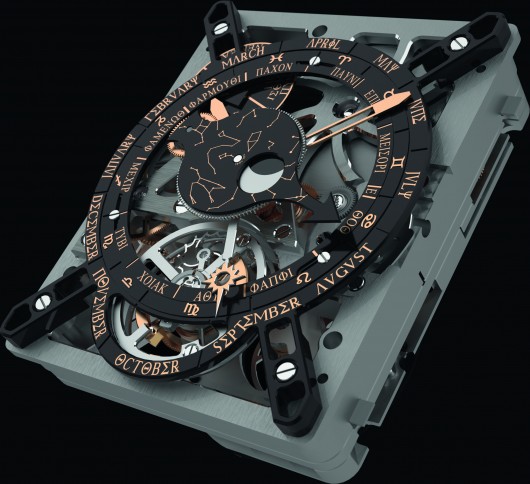Trying to predict future is one of the characteristics of Human nature which ultimately gave us the scientific method. Antikythera Mechanism is one of the best demonstrations of human intellect attempting to understand nature systematically. The contraption is most certainly a very complex device. It is an impressively accurate “analog model” of our then earth-centric universe.
The Antikythera Mechanism was built like a clock. Trains of interlocking gearwheels controlled the movements of a minimum of seven pointers perfectly tracking the movements of the Sun, the Moon and the planets observable by naked eye namely Mercury, Venus, Mars, Jupiter and Saturn. Even the phases of the moon were displayed. It was a marvelous portable mechanical planetarium. While seven element solar system was displayed on one face, there was a linked two dial system on the opposite face following a gyre. One dial was pointing to the calendar and the other was pointing to solar and lunar eclipses. Perhaps the most genius design aspect of the contraption is the pin-and-slot device built to correct the epicyclic movements of the Mars, Moon, Jupiter and Saturn which required 4 gearwheels devoted to each.
On one compartment it uses the Metonic Cyle first implemented in the Babylonian calendar and turns math into gearwheels, and gearwheels into a calendar. The Greek astronomer Meton of Athens realized that a period of 19 years is equal to 235 lunar months (6,940 days). The difference between 19 solar years and 235 lunar months is only a few hours. On another compartment it uses Saros cycle to predict eclipses of the Sun and Moon.
It’s discovery and decipherment with a brilliant group of scholars employing state of the art non-destructive technology was a true scientific saga. The former curator of mechanical engineering at the Science Museum Michael T. Wright played a pivotal role in it’s reconstruction and he appeared in many documentaries covering the story of the mechanism. In addition to an earlier LEGO technic model the famous watch company Hublot constructed a replica of the mechanism:
The slow rise of the Antikythera Mechanism into fame began in 1902. That year a Greek archeologist named Spyridon Staïs noticed that the wooden exterior of the item had split open due to desiccation. For the first time it was possible to glimpse into its inner workings. Staïs saw some tiny milimetric inscriptions in ancient Greek, engraved on what looked like a bronze dial. The bronze was encrusted with barnacles and sea salt but the item looked like some sort of advanced mechanical clock. It was so strikingly different that for example in 1980, when the physicist Richard Feynman visited the museum in Athens he was absolutely awestruck with it. Like every curious mind he was disappointed by the fact that nobody had any idea what it was. The physicist wrote that among all those art objects there was one thing so entirely different and strange that it is nearly impossible. It was recovered from the sea in 1900 and is some kind of machine with gear trains, very much like the inside of a modern wind-up alarm clock.
“Suppose a traveller carried into Scythia or Britain the orrery recently constructed by our friend Poseidonius, which at each revolution reproduces the same motions of the sun, the moon, and the five planets that take place in the heavens every day and night, would any single native doubt that this orrery was the work of a rational being?” — Marcus Tullius Cicero – De natura deorum, 2.34-5 (87-88)
Popular science writer Jo Marchant has worked as an editor at New Scientist and at the Nature magazine and she has covered many articles on the Antikythera Mechanism. She is the author of the book Decoding the Heavens: Solving the Mystery of the World’s First Computer. The following is a lecture given by her at the Gresham College:



5 Comments
Awsome article! Thanks for bringing it up!
Thank you Clelia!
About Cicero’s book, read in latin or english and online https://archive.org/details/denaturadeorumac00ciceuoft at bottom of scanned page 207
What a wonderful resource! Thanks for bringing it to my attention. I love it.